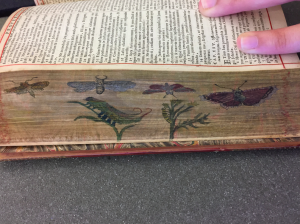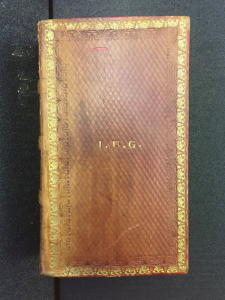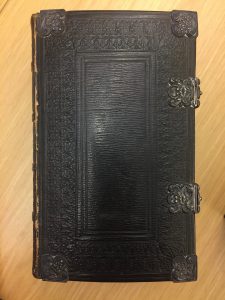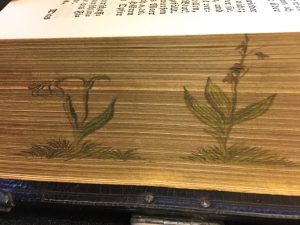Fore-edge paintings are a subtly beautiful aspect of many bibles and other rare books. The Biblia Sacra, published in 1669 in Amsterdam, and the Die Bibel, published in Leipzig, Germany, are two such bibles that display fore-edge paintings.

Biblia Sacra, Fore-edge painting

Biblia Sacra, Front cover
Many books with fore-edge paintings appear gold on the edges of the pages when closed, the paintings only appearing when the book is open or the pages are otherwise bent, but The Biblia Sacra has an abstract painted design on the edges when closed. It is the same design as the inside covers and has the appearance of paint dropped on water and then drawn through with a toothpick, blending the colors together in a marble-like way, much like someone would do with a marble cake before baking it. Once the book is open, paintings of various insects are revealed. The Die Bibel’s fore-edge paintings are various flowering plants. They are separate from each other, not intertwined in a bush or a vine, and each looks different.

Die Bible, Front cover

Die Bibel, Fore-edge painting
It will be interesting to discover the significance that these particular paintings have to the bibles. It is common to have paintings of a particular city’s scenery on the edges or other scenes depicted, but these have single related objects. Thinking of fore-edge paintings in general, it would be interesting to discover what the relevance of them are to the books themselves or to the content. When considering the Biblia Sacra, do the insects have a particular significance to the bible? Or maybe to Amsterdam at that time? Maybe each insect symbolizes something different, like a virtue or something else related to religious thinking. Researching the specific ones depicted and what they could represent may give clues as to why the artist chose these particular insects to paint on the edges of a bible. It would also be interesting to discover why the particular abstract design, which looks much more modern than dating to 1669. Is this an original component of the bible, or was it added later? Perhaps looking at other bibles with similar paintings could help indicate the significance of the specific design. For the Die Bible’s paintings of flowers, the same questions can be pondered. Do these particular flowers also represent certain things? Perhaps flowers have a special significance to Germany. The date of publication is not indicated in the bible, at least not to my observations, so it would be difficult to consider these paintings in the context of their date like we could with the Biblia Sacra. These bibles aren’t from the same country, though both are from northern Europe, which could indicate a possible connection in the style of having singular objects as opposed to an entire scene painted onto them.